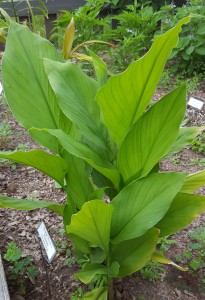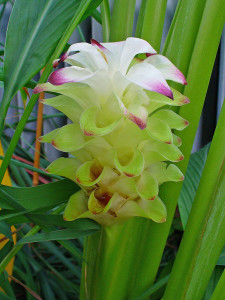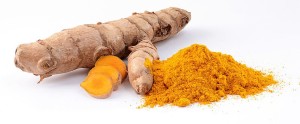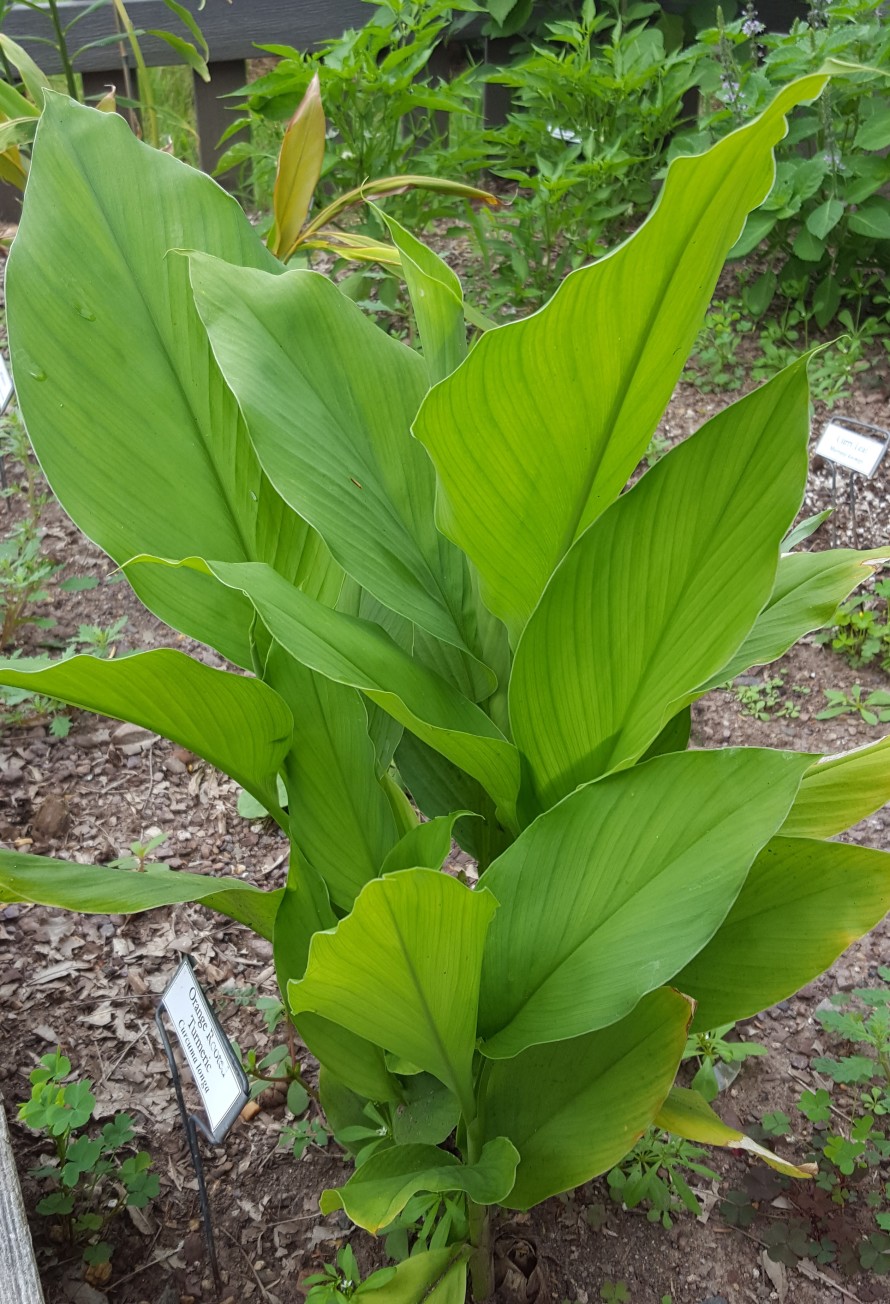
Turmeric Plant
Turmeric (Curcuma longa) has been used for thousands of years. It was originally used as a dye plant. Even though it fades in the sunlight, it is still used to dye monks’ robes and for clothing in its native India and Bangladesh.
Turmeric is more often associated with food. The root is used, both fresh and dried, as well as the leaves. The leaves are used to wrap other foods in. This is common in areas where turmeric grows wild because the leaves must be used fresh.
Turmeric is also famous as a medicinal herb. It is used in the Indian medicinal tradition known as Siddha which uses turmeric to treat a variety of internal complaints as well as on external sores. In India, turmeric is considered sacred.
Turmeric is native to southern Asia. It is related to ginger. Turmeric is a tropical plant requiring temperatures of 70⁰F to 90⁰F with a lot of rain. It is hardy in zones 9 through 11. The plants grow to 3 feet fall. They prefer full sun but only if they have sufficient moisture. It’s best to provide light shade if they will be growing in dryer conditions. Because the roots take 10 months to mature, in temperate zones, turmeric is grown in containers and brought indoors when temperatures fall below 50⁰F to 55⁰F.

Turmeric Flower
Turmeric is most often grown from the rhizomes rather than seeds. The seeds are hard to find because most of the flowers do not produce seeds. The germination rate is low and the resulting rhizome can take years to reach full size. If you are able to find seeds, germinate them on moist paper in the dark. Germination can take up to 20 days. When the seedlings are 1- to 1 1/2 –inches tall, transplant them into sterile sand. After 2 to 3 weeks, the plants can be transplanted into your garden or their permanent container.
It can be a little confusing because the pieces of turmeric rhizomes that are sold by catalogs and nurseries are often called “seeds”. Start with a large container. Grown in too small of a container, turmeric will literally break out of its confines, like tree roots that lift sidewalks. Ideally you should choose a container that is at least 12 inches deep. Fill it with well-drained slightly acidic potting mix. Plant your “seeds” or rhizome pieces 3 inches deep. Keep an eye on your rhizomes. If any start to peek above the soil surface during the growing season, immediately cover them with at least 2 inches of soil.
Keep your container warm and well-watered. If you have moved it outdoors for the summer, when night-time temperatures start to fall into the 50’sF, it’s time to bring it indoors.
Turmeric takes 8 to 10 months to reach maturity for harvest. If you harvest before then, your rhizomes will be pale and lack flavor. You can tell that your rhizomes are ready for harvest when the leaves start to turn yellow. Cut down the foliage to make your harvest easier. Carefully dig up the rhizomes. They should be a dark orange color, a little lighter at the growing end.

Turmeric Rhizome & Powder
You can use your rhizomes fresh or dried. If you plan to use them fresh, use them immediately. They have a very short shelf life of one week. Alternatively, you can put them in a plastic bag and freeze them. When you need them, grate them frozen on a micro-planer. There is no need to thaw them out. In fact, it will be easier to grate them when they are frozen. Turmeric rhizomes can also be pickled.
To dry turmeric, you must first wash the rhizomes and then boil them for 45 minutes. Afterwards, you slice them up and allow the slices to air dry in a cool, dark place for up to a week. When the pieces are completely dry, they can be ground either with a mortar and pestle or in a nut grinder. Store the resulting powder in a tightly sealed glass container in a cool dark place. Like most spices, you should use your powder within one year for the best flavor.

